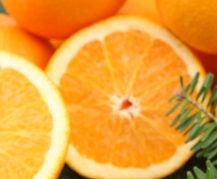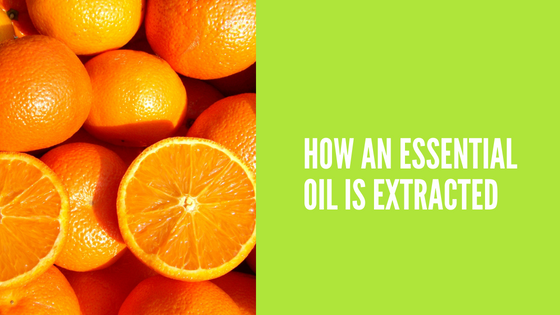Have you ever wondered how an essential oil is extracted? When you buy an oil, have you thought about how it came to make its way into that little bottle? To be honest, unless you’ve had essential oil training then you’ve probably bought the oil for a particular reason or for its aroma. You probably didn’t consider the extraction method. And that’s fine!
came to make its way into that little bottle? To be honest, unless you’ve had essential oil training then you’ve probably bought the oil for a particular reason or for its aroma. You probably didn’t consider the extraction method. And that’s fine!
Aromatherapists tend to be aware of how an essential oil is extracted, because let’s be honest, it’s part of our job! Knowing how an oil has been extracted from its source means we know the chemical composition. It gives us an idea about what it can be helpful for and allows for a greater understanding of possible cautions.
What are the extraction methods?
Steam distillation:
The majority of essential oils are extracted through steam distillation. This is where the plant material, which may be twigs, roots, leaves, bark, or flowers, is placed in a container with water and heated. The steam then evaporates with the plant material molecules, before being cooled. Water is heavier, so it sinks to the bottom with the heavier plant chemicals. This produces a product you can buy from aromatherapy suppliers, known as hydrolats or hydrosols. The lighter plant molecules then sit on the top and are taken off to be bottled. These are the essential oils.
Absolute:
Another method is an absolute, which is produced by solvent extraction. This method tends to be used for flowers, such as Jasmine and Rose. The plant petals are added to a chemical, often hexane, which then dissolves it into a product known as a concrete. The concrete will have ethanol added to it, which is then cooled to solidify it into a wax. It is then cold filtered to produce a liquid. The ethanol evaporates to leave the absolute essential oil.
it into a product known as a concrete. The concrete will have ethanol added to it, which is then cooled to solidify it into a wax. It is then cold filtered to produce a liquid. The ethanol evaporates to leave the absolute essential oil.
This method can leave a trace of chemical residue and can contain a more complex chemical composition. This is because it will include heavier chemical molecules which are unable to pass through the steam distillation process. An example of this is 2-Phenylethanol which is found in Rose Absolute but not in Rose Otto (the distilled essential oil).
CO2:
A recently newer form of extraction is CO2. This is where the plant material has its molecules extracted using carbon dioxide. Historically, it was not commercially available due to the cost involved, however in recent years it has become available. Recently, due to carbon dioxide shortages, CO2 extracted essential oils are again not available to easily purchase. CO2 essential oils tend to be considered closest to the plant composition, because heat and chemicals have not been used to extract the oils. This means it contains the greatest amount of original plant molecules.
Expression:
Expression is commonly used for citrus oils and produced by pressing the fruits to extract the molecules. Some oils, such as Lemon, Citrus limonum can be bought expressed or steam distilled. Because their chemical composition is different, you will find a difference in their aromas.
How do I know what I’m buying?
Some essential oils can only be produced via one method of extraction – most will have been steam distilled, because it’s the only way to get the essential oil. Some essential oils can be produced through different ways. How  an essential oil is extracted will be on the bottle. Sometimes this will be in the name, sometimes it may be written as an addition.
an essential oil is extracted will be on the bottle. Sometimes this will be in the name, sometimes it may be written as an addition.
Rose Otto is steam distilled, Rose Absolute uses solvent extraction and Rose CO2 is obtained through CO2 extraction. An oil produced using the solvent extraction method will always have Absolute on the bottle, so you may see Rose Absolute, Jasmine Absolute, Tuberose Absolute, Violet Leaf Absolute. This is also the same with the CO2, for example, Rose CO2, Frankincense CO2, or Ginger CO2.
Citrus oils tend to be expressed, so you will only know if this is different by looking at the information on the bottle or on the extraction method information section.
Does it matter?
Honestly? Probably not! For the majority of people, the popular method of extraction is fine. An aromatherapist may choose a different type due to aroma or chemical composition. It’s worth remembering if the oil is being applied topically, then the skin is actually a barrier, so it will stop any molecules which are too big. Knowing how it has been extracted will help you understand the price difference though!
 Louise is an holistic therapist who owns Therapy Centre, BS14 9HB, a clinic in South Bristol. She offers a range of holistic therapies and started her business in 2008. Since then Louise has aged, put on weight and become shorter than her eldest son. Her youngest is rapidly growing and her partner is 6 ft 5, so she anticipates being the shortest soon.
Louise is an holistic therapist who owns Therapy Centre, BS14 9HB, a clinic in South Bristol. She offers a range of holistic therapies and started her business in 2008. Since then Louise has aged, put on weight and become shorter than her eldest son. Her youngest is rapidly growing and her partner is 6 ft 5, so she anticipates being the shortest soon.
Louise hates having her photo taken but keeps changing her hairstyle, so please don’t judge. For information about: therapies, online baby massage course, blog posts you can visit her website louise-morgan.co.uk. You can also book an appointment online

